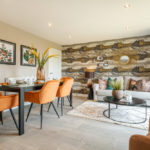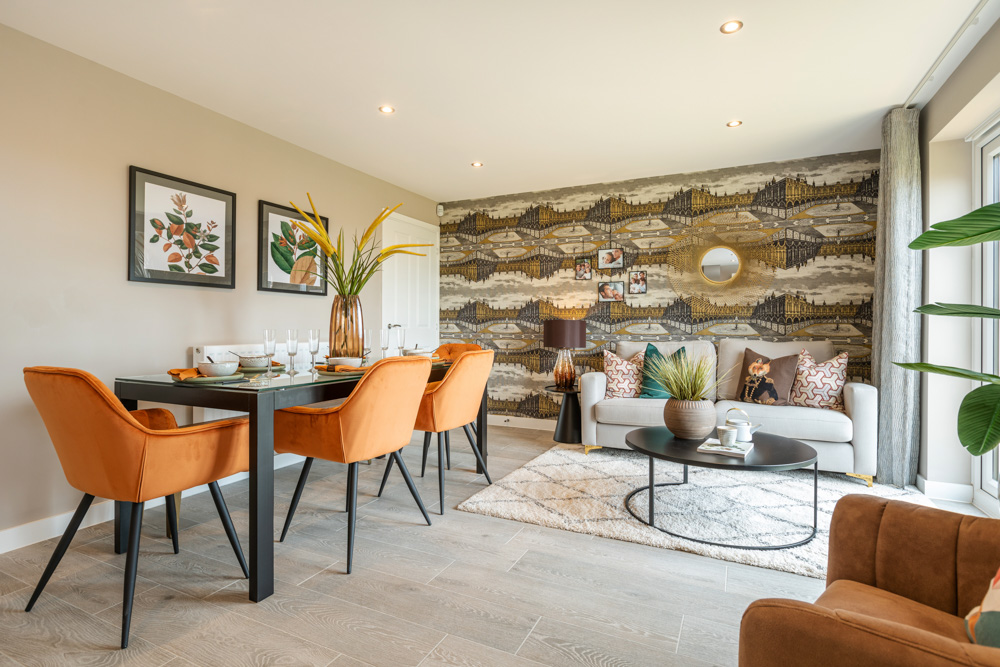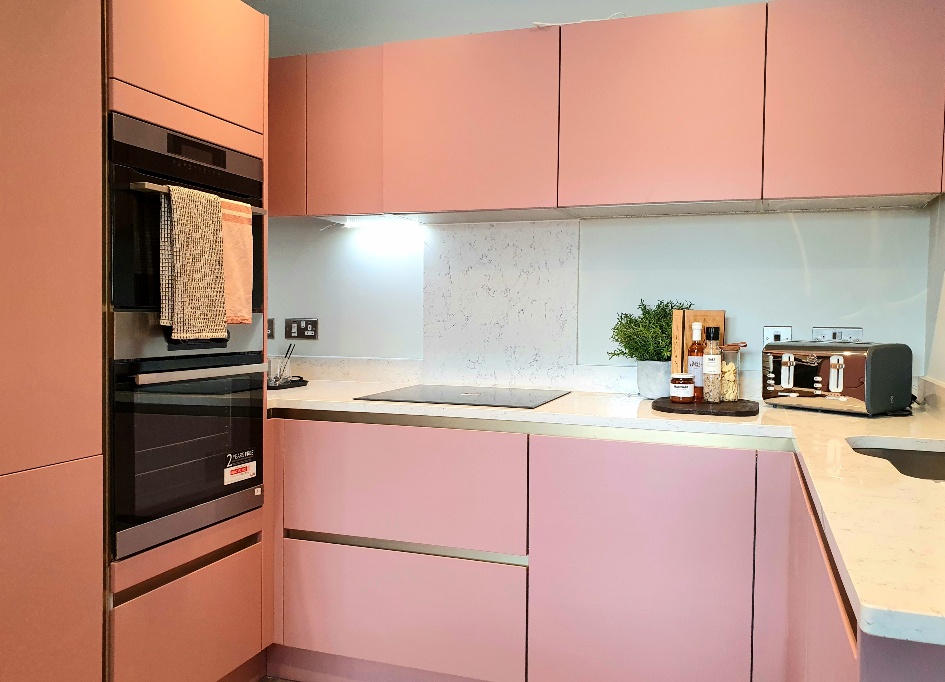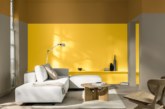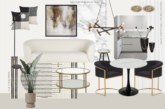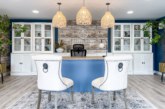One of the biggest benefits of buying a new home is personalising your property by choosing its material finishes – kitchen cabinetry, flooring, tiling and in some cases, soft furnishings. But how do you know where to start? Steve Hird, director at interior design specialists, Edward Thomas Interiors shares his advice on how new homeowners can approach these decisions.
The first thing to consider when choosing any surface material is to think about your home’s overall style. What’s the final look you want to achieve and how does this reflect your lifestyle? For instance, boutique hotel, coastal chic, skandi minimalism, cottagecore, maximalism? Once you’ve decided this you can layer your finishes to suit.
Start with kitchen cabinetry as this will help form the basis for the house. Current trends are for bold colours; navy, forest green, even pink, as these have an instant impact and can be further customised with handles, worksurfaces and splashbacks in metallics, laminates or granite. However, don’t overlook the timeless colours like chalk white as these can be layered with distinctive handles or bold accessories for warmth.
The popularity of open plan living means most kitchens are now multi-purpose so think about how to create individuality or ‘zones’ within the space. For instance, you might choose to make a cosy snug with feature wallpaper, frame a stylish dining area by painting a ceiling panel or create a classic home office with wall panelling and shelving. Don’t forget fabrics for window treatments as these can dramatically soften or enhance the style. Many new homes have French doors or a glazed bay area which can sometimes feel quite cold so try a light sheer fabric to take the edge off the starkness.
For bathrooms, cloakrooms and en-suites, ceramic tiles are hardwearing, versatile and the market is huge. In smaller areas such as cloakrooms or utility rooms our preference is for metro tiles in either a shiny marble or matt and muted colour. Family bathrooms and en-suites look luxurious with either a large format tile throughout or a decorative tile wall e.g. over the bath or the back wall of the shower. Recesses within the tiling are also popular as an alternative storage space to caddies or baskets.
Uniting all the above is your choice of flooring and our advice is to keep it constant in rooms which are read together. So on the ground floor, the hallway, kitchen/diner, cloakroom and utility room should all have the same and any separate spaces e.g. living room, study, dining room can have an alternative. It’s also important to think how flooring interacts with the outdoors and make sure it’s fit for purpose. For instance, you wouldn’t add carpet to an entrance point where there’s the potential for muddy boots or paws. For upstairs rooms, it’s ideal to run the same carpet from the stairs and landing(s) through to the bedrooms and add variety in the bathroom and en-suite – a ceramic or luxury vinyl tile is a great choice for these.
Our final piece of advice is to take your time with these decisions; they’re the fundamentals of your home and are unlikely to change for a significant amount of time so you want to be certain and confident in your choices.

